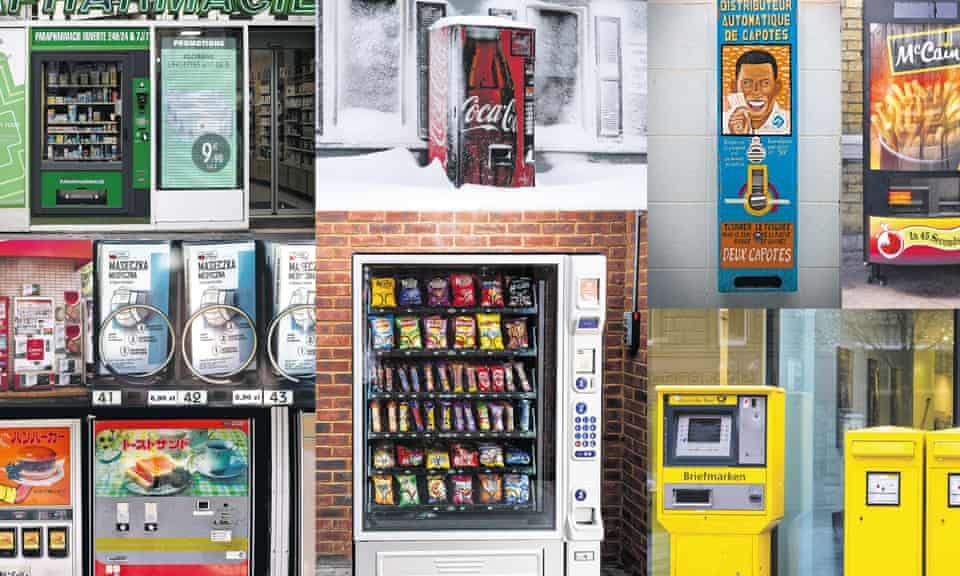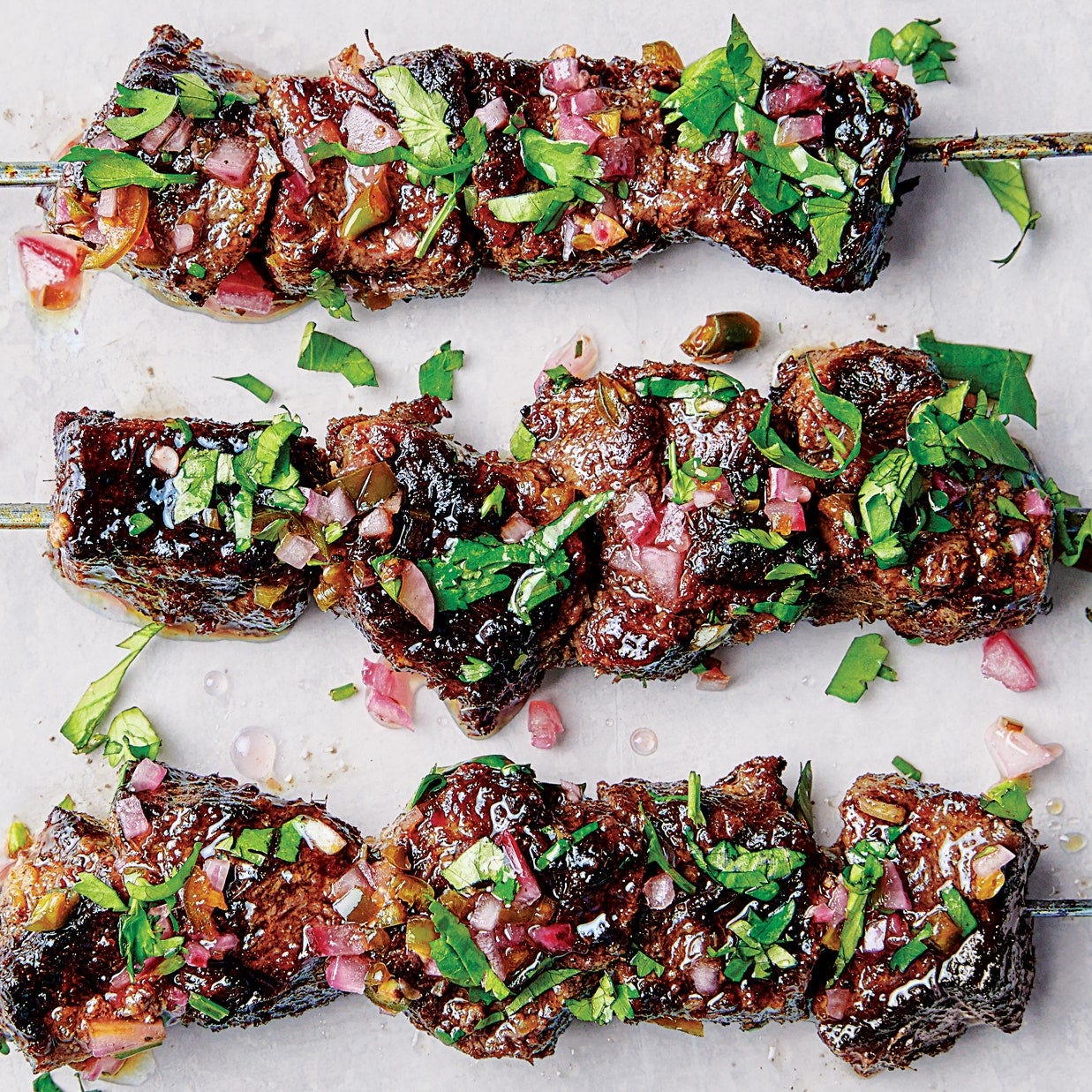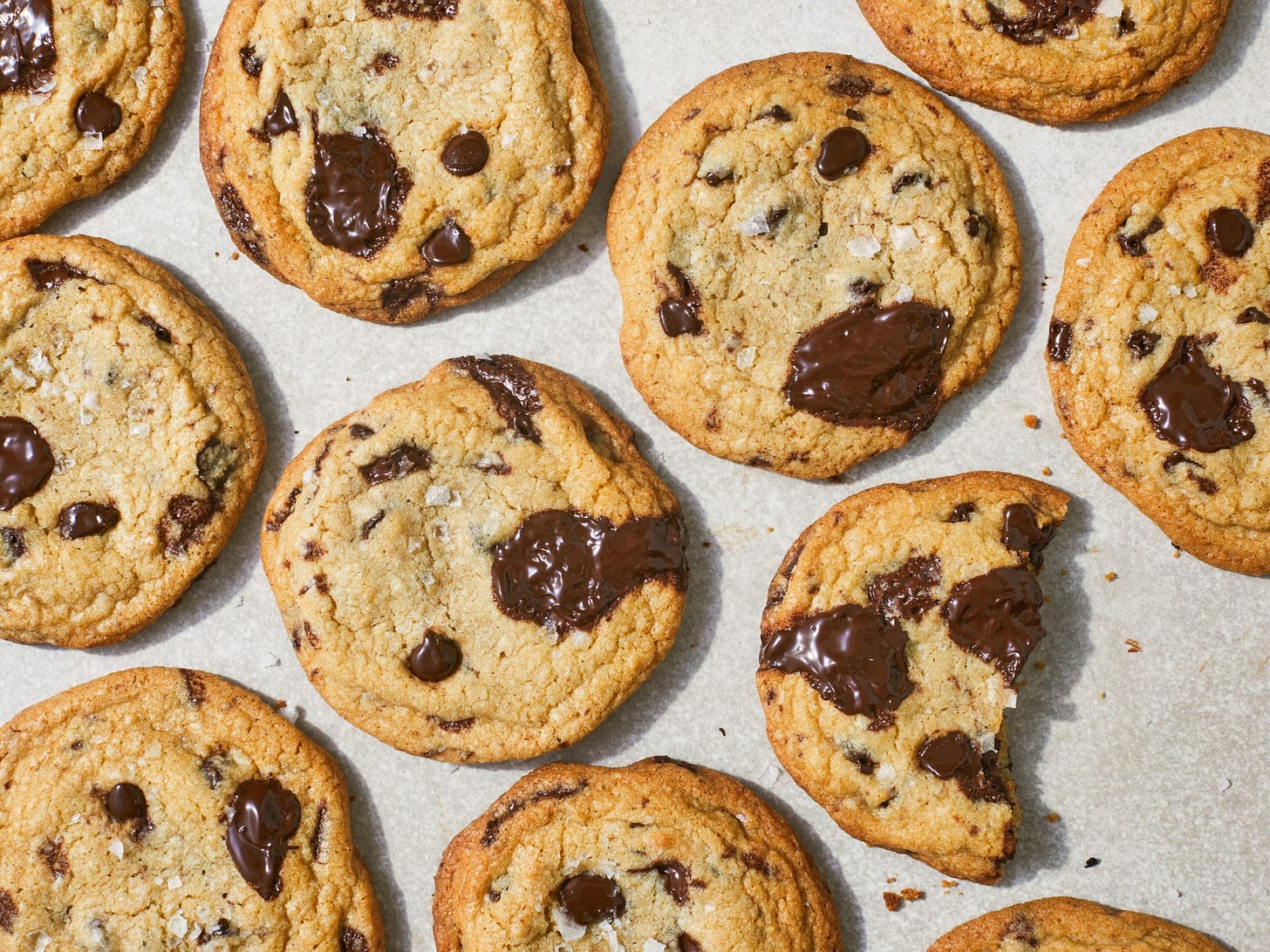Micah's Read of the Week, Vol. 106
Leon Bridges, vending machines, pickleball, Micah's Yoga Club, Recipe Corner, and more.
Hello, and welcome to Micah’s Read of the Week. Sorry we’re late this week.

This is a newsletter filled with things Micah Wiener finds interesting. Check out the archive of previous newsletters here.
So how was Micah’s Yoga Club?
Big shouts to the whole squad who joined me for the first-ever Micah’s Yoga Club. And big thanks to Meanwhile Brewing for hosting. We’ll do it again next month, September 4. Mark your calendar, and remember: practice is free and the first drink’s on me!
Namaste.
Leon Bridges live in Austin
Caitlin and I saw Leon Bridges Saturday night at the Moody Center. It was great. Some thoughts and observations:
Leon and his band were excellent. He was in total control of the stage and his band. His six-piece backing group effortlessly moved across genres and filled the building with a rich sound.
Speaking of the building, it sounds excellent. I’m generally not much a fan of arena shows, but the building felt intimate even though it was considered a sell-out.
The crowd was mostly couples and overwhelmingly white. Every seat was full.
That crowd was also the biggest downer of the night. We were in the pit in front of the stage, and I was surprised by how the crowd appeared to be totally unfamiliar with his newer material. Those in seats rarely got up to dance which was disappointing.
Overall, it was a great show featuring a performer at the top of his game. Go see him.
A day in the life of (almost) every vending machine in the world
What’s behind the indestructible appeal of the robotic snack?
This (very) long read takes a comprehensive look at vending machines and the culture behind them all over the globe.
Gone are the days of coin-operated, dumb machines. New machines know you and your behavior.
Since Covid, people didn’t want to touch anything they didn’t have to. Big change was sweeping through automated vending, and the first thing to go was small change. As cash sales tumbled in 2020 and 2021, and contactless sales climbed, the Brodericks had been the beneficiary of new and better information about their customers. Pre-Covid, not only did they have to go and fetch someone’s coppery quid, then count it – they didn’t even know whose quid it was. Now the tycoons of vending understood us better. Johnny Brod had released a smartphone app that tempted people with discounts in return for permission to track their vending habits.
He led us into a control room that had large screens mounted on the walls and employees arranged Nasa-style, facing screens on which stationary dots and travelling arrows identified thousands of vending machines and the technicians who roved between them. We watched a live ticking record of the day’s sales activity, north to Aberdeen, south to the Isle of Wight. A couple of quick clicks on a technician’s computer and we were marvelling at the snacking history of a loyal, I would say fanatical, Broderick customer in Manchester, someone who must have been sourcing two full meals a day from behind glass.
Throughout the history of vending machines, people have been trying to get one over on the “silent salesmen.”
Tricking vending machines was called “slugging”, because you fed in cheap brass slugs instead of money. Hundreds of worthless metal lozenges advertising boot polish were found inside a single machine in south-west London in 1914. More than a century later, Johnny Brod told me that sluggers were still at large, only these days they tended to use counterfeit currency.
Every vending machine is a battleground. Profits are ruthlessly haggled over. Competition for spots is intense.
Broadly speaking, the vending game is built on deals between operators (who own machines and have the skills to install them, fix them, constantly fill them with fats and sugars) and site owners (who have the rights to advantageous pieces of land). Either a machine is placed on private property – say, a factory, where the site owner surrenders profits to the operator in return for keeping a workforce fed and present – or, a machine is placed somewhere public, inside a teeming airport, for instance. Here the site owner will expect a cut of each item sold, anywhere from 10% to 30%.
There’s a lot of science behind the placement of items.
He put his Twix Xtras and some Maltesers down on the bottom shelves, nearest the SnackMart’s fridge unit. Crisps were placed in the warmest part of the machine, up at the top. The midget gems could go anywhere, really, and today he decided to give them a try in primetime – halfway along, halfway up. In vending, this part of the job, as delicate as flower arrangement, is known as planogramming. Sewell told me he preferred to keep more colourfully packaged items on the fringes of his machines, to catch the eye and draw attention across his range. If the glass or Perspex window of a vending machine is like a canvas, these operators aimed to paint a picture of abundance. “You don’t want the customer saying, och, there’s nothing to choose from,” Chambers said.
My favorite part of the piece? This quote:
He was considering an expansion into London Heathrow, “where they still have the same shit machines you saw in Love Actually, 20 years ago. And you can print that.”
Can Pickleball Save America?
The sport, beloved for its democratic spirit, could unite the country—if it doesn’t divide itself first.
Pickleball, which is played with paddles and a Wiffle-like ball, has exploded in popularity in recent years. It’s also a big favorite of mine.
This long piece from the New Yorker tells an interesting story about the war for the future of America’s fastest growing sport. It includes some fascinating characters.
Most of the sport’s popularity is in the recreational realm, in public parks, converted tennis facilities, and the expanding zone of party-friendly pickleball restaurants. But, since 2020, a burgeoning pro scene has been accelerated by two tours in the U.S., the A.P.P. Tour and the P.P.A. (Professional Pickleball Association) Tour, which, combined, run more than fifty tournaments a year.
A major shakeup had rocked the picklesphere: the Texas billionaire Tom Dundon, the owner of the N.H.L. team the Carolina Hurricanes, had taken over the P.P.A., and immediately got top pros to sign exclusive three-year contracts, which guaranteed them money but banned them from most non-P.P.A. tournaments. Overnight, the small and tight-knit pro community had been divided into camps.
The sense of possibility skyrocketed further when, in 2021, a garrulous former hedge-fund manager named Steve Kuhn unveiled a pickleball mecca in Dripping Springs, Texas, called Dreamland, as well as a standardized pickleball rating system he’d developed, called dupr (Dynamic Universal Pickleball Ratings), and a new league, Major League Pickleball, which grouped players into teams. Kuhn’s innovations made a big and immediate splash. Dreamland, a sixty-four-acre “mission-driven playground,” as Kuhn has called it, has mini-golf, pickleball, cornhole, a beer garden with solar panels, a live-music venue, a graffiti park, enormous psychedelic paintings on captured-rainwater silos, and, flapping above it all, an American flag roughly the size of a pickleball court. “I originally named it after the American Dream,” Kuhn said.
Dreamland is 4 miles from my house and you can find me there on the regular, fwiw.
For a while, all of this—the A.P.P., the P.P.A., M.L.P.—was generally seen as heartening by the pickleball community. Then Dundon came along. Dundon is lean and bestubbled, and made his fortune in subprime auto loans. He’s a pickleball fan, but also an outsider, who often talks about “feeding the masses”—moving the sport from its folksy niche into the realm of TV, gambling, and big-time sponsors. In December, when he pledged to buy the P.P.A., he also bought Pickleball Central, a.k.a. the Amazon of pickleball, and the sport’s sole tournament-organizing Web site, pickleballtournaments.com, whose I.P. includes almost two decades’ worth of player and event data.
The takeover was familiar: Dundon had been the controlling owner of a pro football league, the A.A.F., which went bankrupt in 2019. (Dundon ended the season early; players didn’t receive severance until a settlement was reached in court.)
Anyway, if you want to listen to the full story and hear more about the future of the sport, check out my podcast, Mind of Micah.
Recipe Corner
Coconut and Lemongrass Steak Skewers
We’re grilling again.
DRESSING
2 serrano chiles, chopped (seeds and all)
¼ cup fresh lime juice
2 Tbsp. extra-virgin olive oil
2 Tbsp. finely chopped red onion
2 tsp. honey
Kosher salt
SKEWERS AND ASSEMBLY
2 lemongrass stalks, bottom third only, tough outer layers removed, thinly sliced 2
serrano chiles, with seeds if you want some heat
1 2" piece ginger, peeled, thinly sliced
4 garlic cloves
1 13.5-oz. can unsweetened coconut milk
⅓ cup seasoned rice vinegar
1½ lb. trimmed hanger, flatiron, or flap (bavette) steak, cut into 1" cubes
Vegetable oil (for grill)
Kosher salt
Chopped cilantro (for serving)
Whisk chiles, lime juice, oil, onion, and honey in a small bowl to combine; season with salt.
Purée lemongrass, chiles, ginger, garlic, coconut milk, and vinegar in a blender until smooth. Transfer to a medium bowl. Add meat and toss to coat completely. Cover with a large plate and let sit at room temperature at least 4 hours or chill up to 1 day.
Prepare a grill for medium-high heat; oil grate. Drain marinade from meat and thread meat onto skewers; season lightly with salt. Grill, turning every 1–2 minutes, until meat is browned all over and firm around edges with just a bit of bounce in the center when gently pressed, 6–8 minutes for medium.
Transfer skewers to plates. Drizzle with dressing and scatter some cilantro over.
Grilled Corn With Peanut Sauce
You may have wondered, what do I do with this leftover coconut milk? I have the solution.
Ingredients
6 ears fresh corn in their husks
2 tablespoons extra-virgin olive oil or vegetable oil
1/2 teaspoon fine salt
1/4 cup crunchy peanut butter
1/3 cup canned full-fat coconut milk
1 fresh red chile (such as Thai bird’s eye or Fresno), stemmed, seeded and finely chopped
2 tablespoons fresh lime juice
1 1/2 tablespoons low-sodium soy sauce
1 tablespoon finely chopped fresh chives
1 teaspoon grated fresh ginger
Prepare a charcoal or gas grill for direct heat, medium-high.
Cut off the stalk end of each cob (the end opposite the silks) right through the first row of kernels. Run water over the ears to soak them thoroughly, put three of them on a microwaveable plate and microwave on HIGH for 5 minutes. Hold each ear by the silk end and shake up and down, letting the ear fall out, twisting and pushing from the silk end if it needs some help. Repeat with the remaining ears of corn.
In a large bowl, coat the corn with the oil and season with the salt.
In a small bowl, whisk together the peanut butter, coconut milk, chile, lime, soy sauce, chives and ginger.
When the grill is hot, grill the corn, turning often, until it’s browned or charred to your liking, 3 to 4 minutes per side. (If using a grill pan, heat it over medium-high heat until smoking before cooking the corn, turning it often and working in batches if necessary, 3 to 4 minutes per side. If using the broiler, position a rack in the closest position, transfer the corn to a sheet pan and broil, turning often, 5 to 6 minutes per side.)
Transfer the grilled corn to a serving platter and spoon the sauce on top, or divide among plates and serve the sauce alongside, letting guests spoon the sauce on top.
Brown-Butter Chocolate Chip Cookies
We still haven’t met the neighbors. I’m baking cookies and delivering them this weekend.
1 cup (2 sticks) unsalted butter
2 1/2 cups (about 10 5/8 ounces) all-purpose flour
1 teaspoon baking powder
3/4 teaspoon kosher salt
1/2 teaspoon baking soda
1 cup packed dark brown sugar
1/2 cup granulated sugar
2 large eggs
2 teaspoon vanilla extract
3/4 cup bittersweet chocolate chips, morsels, or discs (about 60% cacao)
1 (3 1/2-ounce) bittersweet chocolate bar (about 70% cacao), chopped
1/2 teaspoon flaky sea salt, such as Maldon
Melt butter in a small saucepan over medium-low. Cook, stirring occasionally, until butter starts to foam and turn brown, about 10 minutes. Immediately pour into a heatproof glass bowl; cover and chill until solidified, about 1 hour. (For quicker cooling, place in a freezer-proof bowl, and freeze about 30 minutes.)
Meanwhile, preheat oven to 350°F. Line 3 large baking sheets with parchment paper, and set aside. Sift together flour, baking powder, kosher salt, and baking soda in a medium bowl, and set aside.
Beat chilled browned butter, brown sugar, and granulated sugar with an electric mixer (if working with a stand mixer, use the paddle attachment) on medium-high speed until light and fluffy, about 3 minutes. Add eggs and vanilla, and beat on medium speed until well combined, about 1 minute. With mixer running on low speed, gradually add flour mixture, beating just until combined, about 1 minute. Fold in chocolate. Using a 3-tablespoon cookie scoop, scoop dough, 2 inches apart, onto prepared baking sheets (do not flatten). Sprinkle with flaky sea salt.
Place 2 of the baking sheets on separate racks in preheated oven, and bake until edges of cookies are lightly golden and set, 12 to 14 minutes, rotating pans (top to bottom) halfway through bake time. Let cookies cool on pans 10 minutes; transfer to wire racks. Bake remaining baking sheet of cookies until edges are lightly golden and set, 12 to 14 minutes, repeating cooling process. Serve cookies warm, or let cool completely, about 15 minutes.
Did Micah practice yoga this weekend?
Yes. Micah’s Yoga Club Sunday at Meanwhile. Please join us next Month.
That’s 28 in-person weekend classes in 31 weeks this year.
More Micah
Homebuying consultations: savewithmicah.com
Podcasts: Mind of Micah & Back Door Cover
Twitter: @micahwiener & @producermicah (Why two twitter accounts? It’s a long story)
Instagram: @micahwiener
LinkedIn: @micahwiener
TikTok: @mortgagemicah
Peloton: #badboysofpelly @micahwiener
Email: micahwiener@me.com
NMLS #2090158, equal housing lender.








